3Ms!
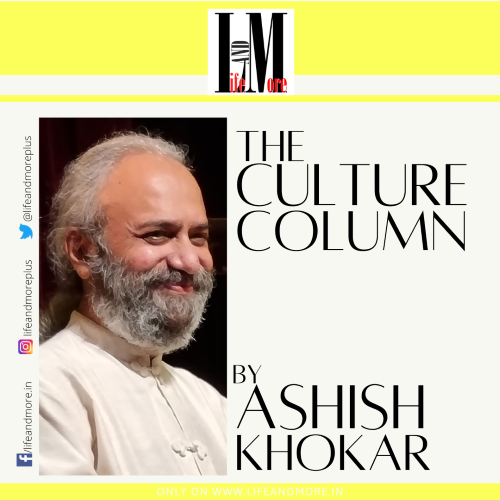
Mysore pak, Mumbai Masala and Mahakumbh. That’s the canvas this month. Add the marriage of Brazil with India; folk with modern and tags with riches-to-rags story.
Mysore Pak
Mysore is the erstwhile royal kingdom out of which Karnataka was born. The Ekikarana movement which started in the later half of the 20th century, culminated in the States Reorganisation Act of 1956 which provided for parts of Coorg, Madras, Hyderabad, and Bombay states to be incorporated into the state of Mysore. Mysore state was renamed Karnataka in 1973. Mysore is known for many things: the Wodeyar dynasty; a palace that looks like it’s made of gold. (The throne is! Weighs just under 70 kilos and taken out only one day a year – Dussehra – royally.) And one sweet sweet – Mysore Pak.
Mysore Pak received a Geographical Indication (GI) tag in 2016. But it seems there was some confusion over provenance and ownership. The GI tag is given by the Union Ministry of Commerce and Industry. Why was the GI tag important? The GI tag protects the authenticity of Mysore Pak and signifies its origin. It also recognises the unique flavour and preparation methods of the sweet.
In 2019, Kumar, the grandson of Kakasura Madappa, applied for the GI tag on behalf of his family. Legend has it that former Mysore king Krishnaraja Wadiyar IV (1902-1940) was known to be a food connoisseur. He often ordered the royal kitchens to come up with unusual prasad offerings and one day there was nothing on the table so the royal cook took upon himself to create a fudge – like (Pak) of gram flour, clarified butter and sugar. When the King asked what’s its name the cook uttered Mysore….pak! The name stuck. Till date, it is a sweet that melts in your mouth, with little heat or temperature it can be easily swallowed without even having to move one’s mouth to be eaten!
What’s a Gi tag? Don’t look up the internet as one place it says Glucose Index! At yet another it says something else. It is a Geographical Indicator of a specific, culturally important, product. The GI tag is issued by the Geographical Indications Registry for a product that corresponds to a specific geographic location or origin, for instance, Darjeeling Tea. (India’s first item to be given a Gi tag as early as in 2005-6). The right enables the tag holders to prevent third-party usage. Which was what was happening with the Darjeeling tea – anyone in the world was selling their own junk tea under the brand name of Darjeeling tea!

According to a report in print media, Uttar Pradesh today has the highest number of GI tag products in the country. Tamil Nadu number two. Karnataka – of the 42 products that have been given the GI tag in the state, 18 belong to Mysore or Mysuru alone.
China has almost 9k plus! India just 700+. When India has so many unusual products to celebrate. Like its Mysore Pak or Benarsi silk brocades or Patan Patola or Pashmina shawl or Moradabad Bidri, Agra Petha, Bengali sondesh ….eeemmmaa! The list can be endless…. add Hilsa haha.
Last fortnight the Commerce Ministry’s Dept for Promotion of Industry & Internal Trade, under the charge of a hands-on head Himani Pande and team, held day-long deliberations with India Today group actually putting it together – from content to context – and who better than the most reputable media house to be given the task to do so? They have the wherewithal of getting everyone on board and structuring such discourses with substance and spunk. The whole day was seamless. And meaningful.
Assorted experts, speakers, panelists and patriots held the audience’s attention by well-prepared speeches and sessions, curated by India Today team, headed by the opening remarks by effective and ebullient editorial head of the group Raj Chengappa, yes again from Karnataka, Coorg to be precise (for Gi tag!). When a coffee from the region (Coorg is known for its coffee, cashew estates, pork dishes and handsome people, who look royal and also were warriors in history; add sportsmen like Prakash Padukone and fashion designer Prasad Bidappa) was registered as a brand long, long ago, it was rejected by the authorities giving license /permission saying “how can a district name be taken and a product named or branded?” This story was shared by brand consultant Harish Bijoor, again from namma Bengaluru, Karnataka!
B for Bangalore and B for Benaras, which has recently got three cultural Gi tags for its paan, table and shehnai. Dr Rajni Kant – no, not the action hero of Tamil-Telugu-Hindi films – but a man with a mission and wavy hair, looking dashing and smashing all records in the Gi journey he has got for his Uttar Pradesh the maximum Gi tags -75- and growing. Rajni Kant from paan hq of India – Benaras – also the PMs constituency three times (though it was Baroda the first time – where I was born too – first as CM of Gujarat then as first time PM too, though to test the waters , he had contested from Benaras too and won thrice now), has spear-headed the campaign to get maximum Gi tags.
In the pre-lunch (lunch items curated by ITC, which also has catering contract for Bharat Mandapam complex where all high-end government mega meetings are held now after the inaugural at G20 last September, based on all Gi-tagged food items!) session a direct, no-holds barred speaker was Ganesh Hingmare from Pune and Uttam Pant from Mehsana. BJP spokesman Gopal Krishna Agarwal was also an effective speaker. Carpet sellers looked well-cleaned or spruced up and many carpet baggers were part of this day-long assembly. It was a mix of fine wine makers and drinkers of Ganga jal! Folk with modernity. Yours truly – looking dumpy in fading and falling corduroys (it was Delhi’s January cold winter and living in South India for the last 25 years, we possess very few woollens that are wearable now) tried to find a place for culture in the field of commerce. You see culture is NOT a product but a process so where do we place Indian classical dance forms? Only three linked have got the Gi tag: a funeral dance in UK (Uttarakhand, not that country ruled last by an Indian!) called Bhautiya; a dance mask from Purulia, Bengal and a dancing clay doll from Thanjavur in TN. Music instruments can be geo tagged, but dance? It comes under traditional intangible heritage so double trouble. Then too in absence of a coherent cultural policy, all governments do tokenism or fire-fighting. One year this is in fashion then next something else. There is no real continuity.
The last session was reserved for the best. Piyush Goyal is a game-changer minister. He revitalised the railway ministry in his last term and in this, in-charge of commerce, he is an active minister. He speaks to the point and Raj Chengappa engaged him in a good, meaningful conversation in which even not-so-pleasant issues (like a giant panda-of-a-country in the far east) taken up.
One of the most touching sessions (only one in which the conductor of the session knew Indian tradition to take shoes off before coming on stage but then he is S Ranjit, hailing from Madurai, himself a trained singer at Delhi’s GM) was on music because it showed transition: a young sitar player with bag that had many tags of his globe-trotting life and a senior shehnai player – Sanjay Shankar whose last performance it soon turned out to be as he died suddenly a week later. Born in 1978 and gone in 2025. Shocking. Shehnai is the only Indian instrument that’s used both for birth and death; for happy, auspicious occasions and sad farewells. To think he represented that. God has a plan for everyone.
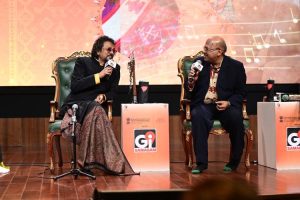
Farewells and beginnings. Circle of life. In one such instance another sweet thing from Mysore is a 6.2 feet dancer called Shridhar Jain. His story begins and stands corrected: He was not born with a silver spoon in mouth but looks royal. Dresses royal too, silk, chunky gold jewellery and all. The dance bug caught him like a virus when he was just 19. In his initial days he didn’t charge fees, but now does and it is very nominal. Since last year, he has been taking ₹1000 per month. Imagine! Until 2021, it was just ₹500, and until 2023, it was ₹700. However, he provides free classes to those who are financially struggling and charges very minimal fees for students from villages. He also provides free costumes, free jewelry, free makeup, and free transportation to all students for programs.
“Shridhar was already learning dance before his elder brother’s accident. He has a very strong personality. Although he was deeply affected, he never fell into depression. He had to support his family financially and worked day and night while continuing to learn dance. At that time, Shridhar was just 19 years old, but he faced all the challenges boldly,” says the very sabhya Soumya, his wife.
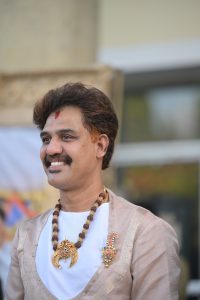
Guru Shridhar does not receive any support from the Jain community being a Jain, but from all: his friends and well-wishers sponsor the Hejje Gejje annual programme is done by the Nimishamba Dance Institution, created by Shridhar and wife Soumya, who has been a government employee for the past 23 years, working as a Hindustani classical music lecturer in a government B.Ed college as part of the Art Education faculty. She is actually the first musician in her family!
Shridhar worked in an electronics company for seven years, but he is not an engineer. He studied up to PUC and earned a diploma in Dance from the Fine Arts College of Mysore University. He also completed the Vidwath exam in dance under the guidance of Guru Sheela Shridhar at the age of 31.
Guru Shridhar teaches only Bharatanatyam in his classes. However, he teaches folk dance exclusively during program practice sessions on Sundays. He has never taught Western or film dances. Instead, he used to invite the best Western dance groups to perform at Hejje Gejje.
So far, they have performed in Hong Kong (China), London, Dubai, and Bangkok. With their dulcet daughter Lasya, who is a beauty meant for dance and films, the family is steeped in arts. Do they qualify for a Gi tag? When Piyush Goyal was asked this: Who do you think as an Indian qualified for a Gi tag, without doubt but with reverence and deference he said: Our PM Modi ji.
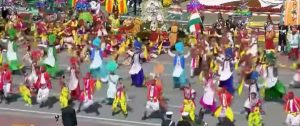
Modi hai toh mumkin hai seems to be the adage this Republic Day when 5000 folk dances gathered for over a month to rehearse and prepare a grand feast that went into the Guinness Book of Records! To practice a month daily in the biting cold of Delhi and then too deliver in 11 minutes a dance choreographed mainly by the SNA chair, Sandhya Purecha, herself a folk dancer of note (before coming to train in Bharatanatyam from Acharya Parvati Kumar) she energised the entire team with sub groups and team in-charge, who practiced day and night to bring song Jayati Jay Jay by Subhash Saigal tuned and sung by Shankar Mahadevan. The stats are mind-boggling and look like an army movement. Well, it was an army of folk dancers, drawn from each state of India through the mandarins of the central culture ministry, where three officers – Uma Nanduri, Aniesh Rajan and Rajeev Kumar – helped streamline all aspects. It was a proud moment for India and the magical movements of its dancers. Sandhya Purecha with Union Culture Minister Gajendra Singh Shekhawat hailed Vande Mataram!
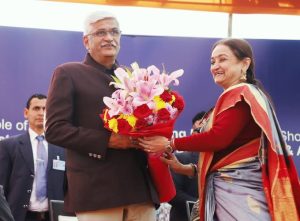
At India’s only heritage non-hotel Hotels, the Neemrana group’s Tijara – four hardy boys (in Enid Blyton stories that one read as a child , there are five) Washim Raja from Bengal doing Kuchipudi, Vishavdeep from Punjab doing Kathak, Abdul Khalid from UP doing Bharatanatyam and Rahul Varshney from Delhi NCR doing Odissi. When they held the National Flag in hand it showed unity in diversity but more than that, the coming together, seamlessly, of many forms and folks. India is so rich.
Four Hardy boys of dance
We are a blessed nation! So when a Brazilian beer brew-master Luiz Fernando Pizzani came here with hundred other Brazilians and assorted Europeans to marry Kerala beauty Archana Gurumurthy who grew up in Muscat but lived in Barcelona , Spain for a year (global Indian!) it was amazing he survived not only the millions that were at Mahakumbh to take a holy dip (why are most Indians so afraid for my doing so? He kept wondering but the unfortunate stampede proved many fears right) and then having been purified and energised he came to namma Bengaluru to marry. India dances and makes others dance to its tunes! When they got a peacock feather as a precious gift from the dancers and waved in unison, it seemed magical.
Luiz Fernando Pizzani and Archana Gurumurthy
Luiz actually walked in our World Dance Day function last year on 5/5 at the Bangalore International Centre (BIC) and sat through the 55 performers that took part in the marathon show and was mesmerised. He then expressed interest to have Indian classical dance and music at his wedding in January end. While we don’t normally do shows for weddings because neither the guests show respect to our artistes (they eat, drink, walk, talk on cell, shout or run away) or they want junk Bollywood song and dance. We had three more meetings with his bride Archana too, then I realised they will honour Indian classical artistes and host properly. I also want Indian classical forms to be part of popular culture and Indian weddings are the most democratic platforms. So we had a surprise package of an exceptional singer of wedding songs in Shreya (not Ghoshal but Singh) and her father Ajai Singh, the tabla vidwan on dholki; two young boys – one on flute Chiranth S. Shukapuri and one on tabla Chinmay Bhardwaj. They held guests enthralled for two hours. Shreya is pint- sized but her voice is grand and she throws afar. She is Indian idol material. Her personality is perfectly pleasant for the stage. In dance, we wanted a palette of all India so Kathak from North and central India by Nadam inhouse talents Preeti Chowdhary and Bhavya Meladi; Odishi by Madhulita Mohapatra students Angeleena Avnee and Shreyashi Dey; Bharatanatyam by Chandana Raju and Vaibhavi Shukla and to show Karnataka culture Yakshangana by ace performer Krishmoorthy Tunga and Pooja Acharya. NADAM took care of all logistics and its Bangalore head Nandini Mehta co-hosted the evening. Zameeruddin found India’s flag and helped raise it high. The standing ovation and hooting said it all when all forms came together in Vande Mataram!
Brazil meets India@wedding
Ashish Khokar is India’s reputed arts historian, author and writer with 51 books to credit and 5k articles in the print media in the last 50 years. A pioneer in arts admin from the 1970s, he has worked nationally (STAS, Sahitya Kala Parishad, INTACH, Martand Singh Asso) and internationally ( Festivals of India in France, Sweden, Germany , China and with AFS of USA as its India head) with many agencies, institutions, museums and more. At heart a teacher, his discourses are full of information with humour and he is an expert visiting many universities and also written 85 modules for UGC’s E- pathshala M.A. Course. He is also the editor-publisher of India’s only yearbook on dance – attenDance – now in its 25th year. He has given attenDance awards to 40+ talents in the last 15 years and mentors many. He was the dance critic of the Times of India for 20 years, The Hindu for 5 and continues to be a contributor to India Today for the last 25 years. Ditto 25 years for India’s best portal for dance, narthaki. As custodian of India’s largest dance archives and collection valued at 7 crores – built by his illustrious family Mohan and Saroja Khokar and donated to the nation@IGNCA – he has shown the way to selfless service to India and its arts, education and culture.


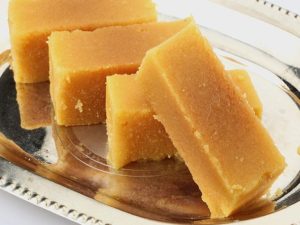

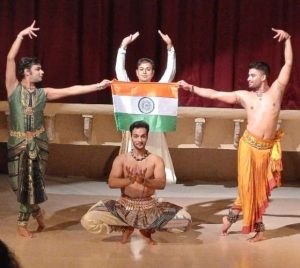

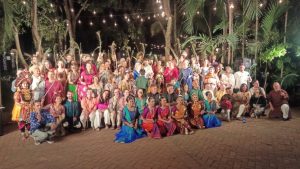
1 Comment
“What a delightful read” , especially liked the article Four hardy boys of dance 😀.
Thank you so much .
– Rahul varshney (Noida)